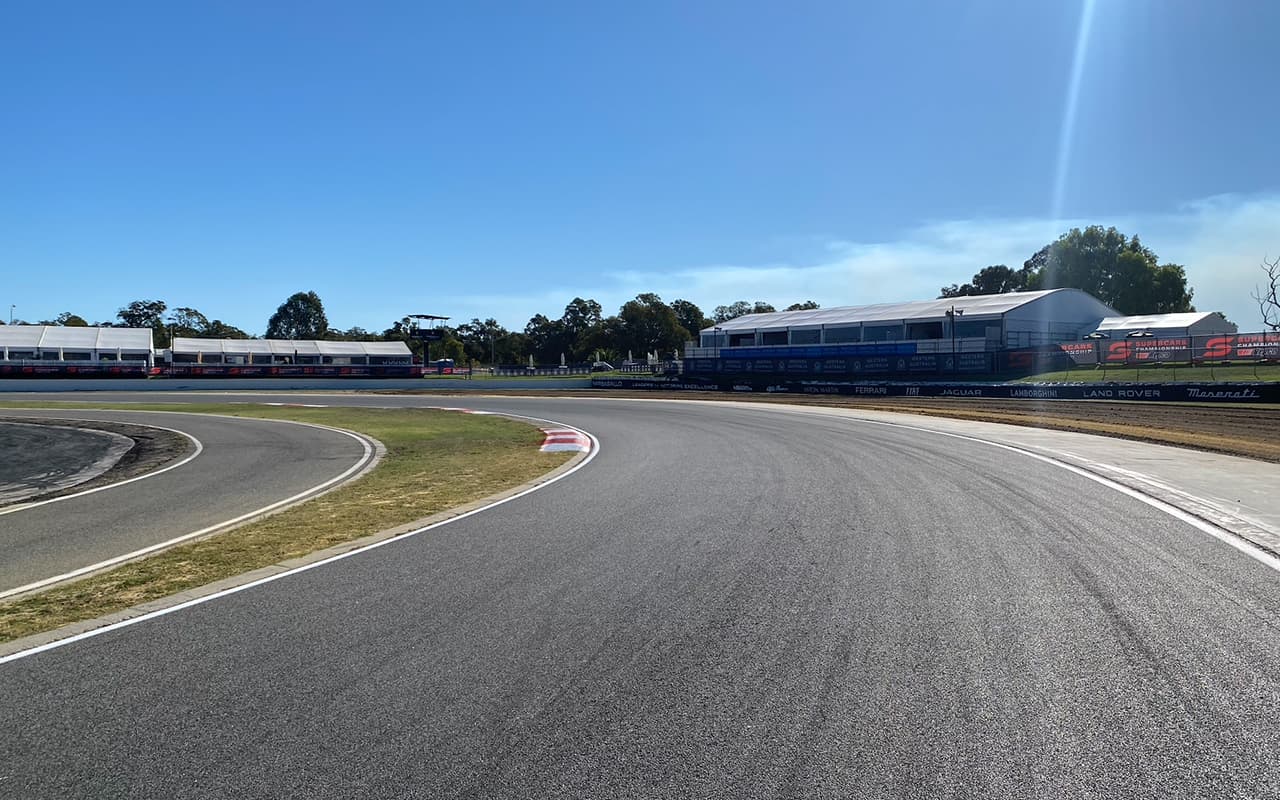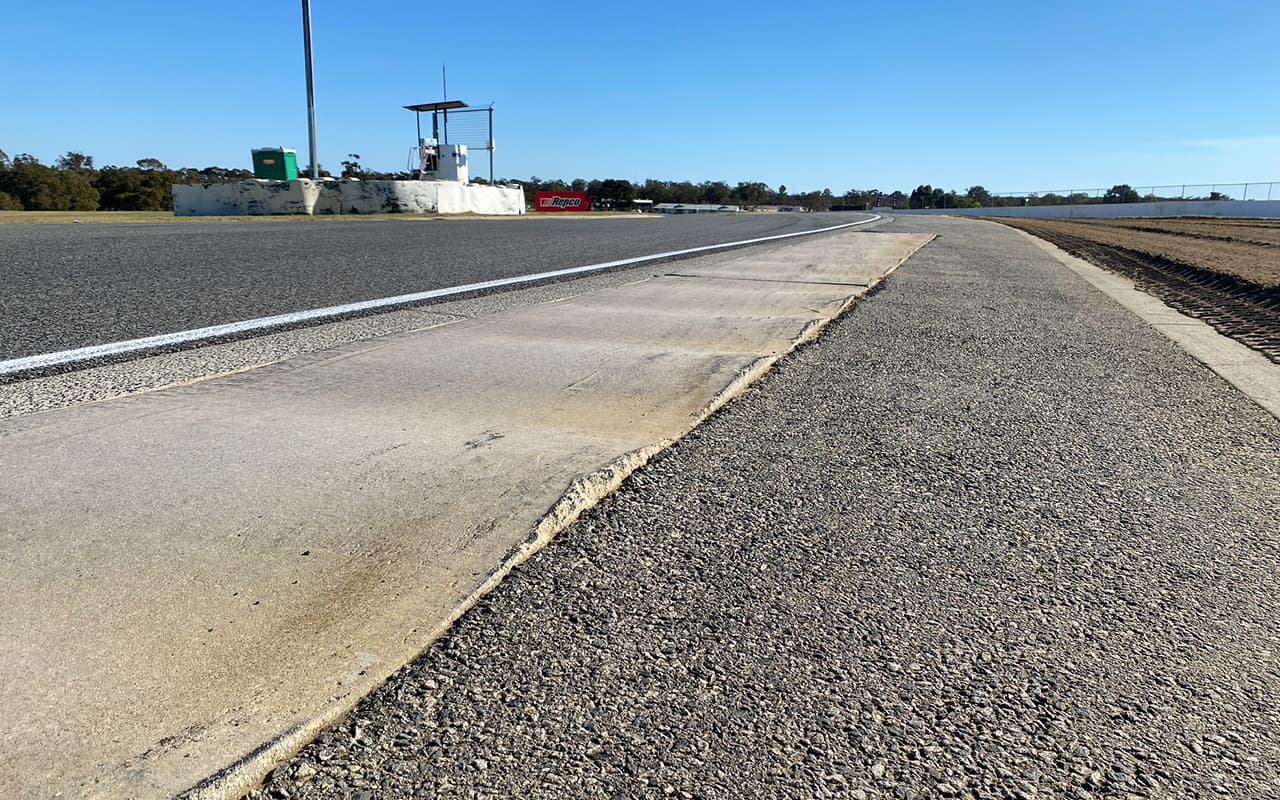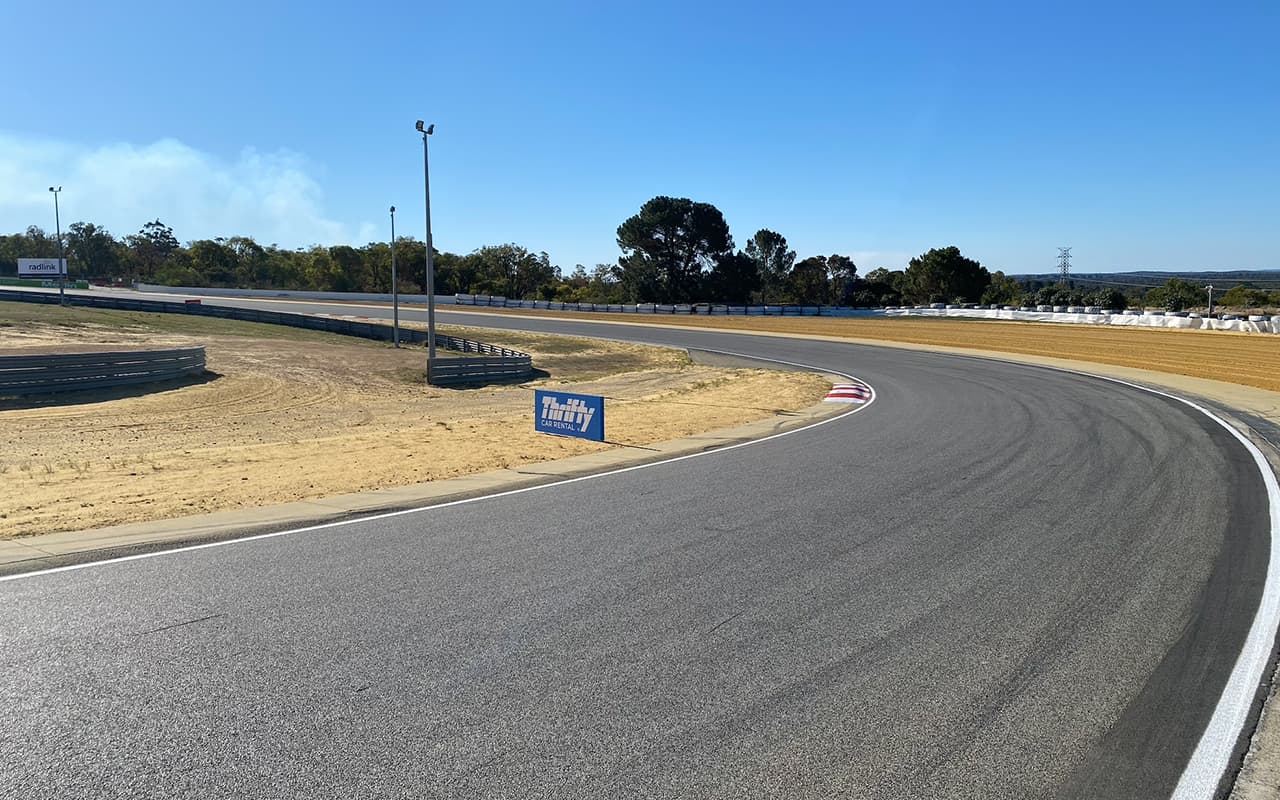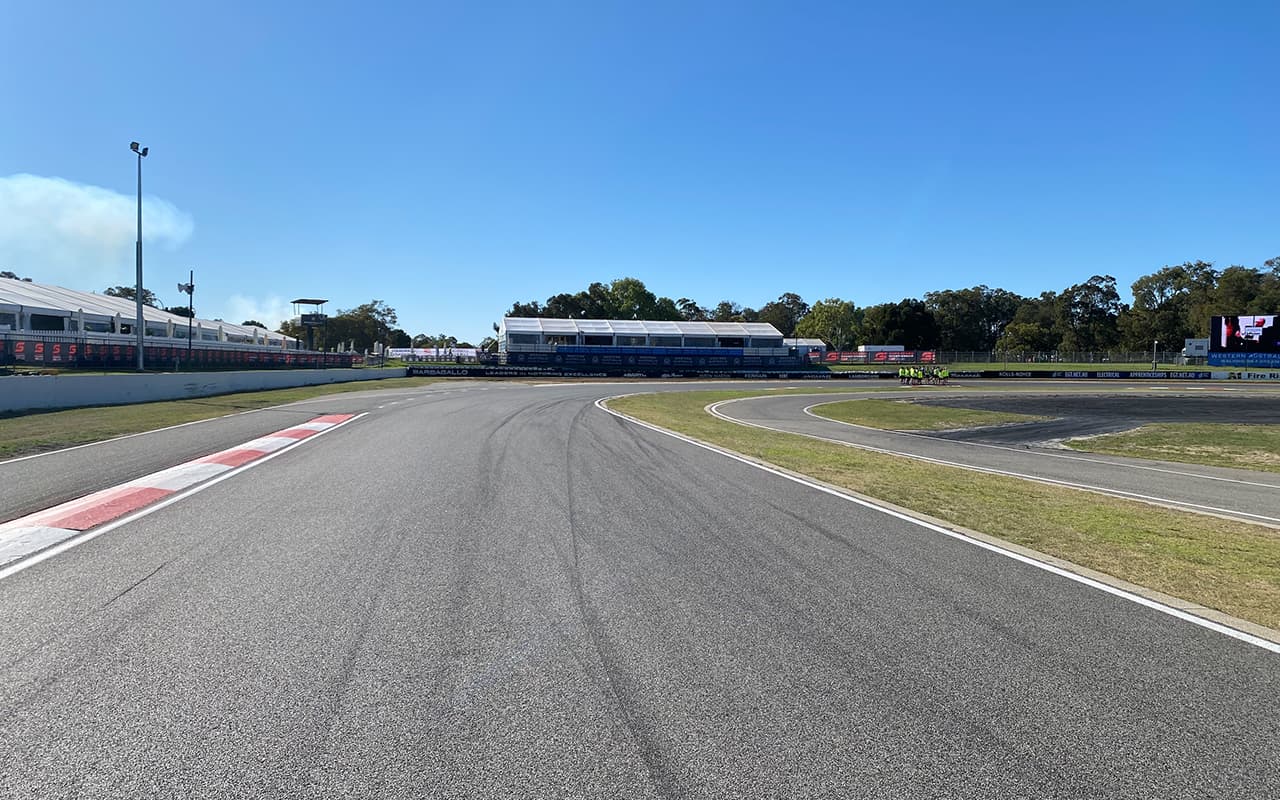Perth track walk: CARCO.com.au Raceway up close
Supercars returns to Western Australia for the annual Bosch Power Tools Perth SuperSprint, and to the historic CARCO.com.au Raceway.
The 2.4km circuit has hosted more championship races than any other venue, with Perth to clock up its 96th and 97th races.
Ahead of the weekend, Supercars.com conducted a pre-event track walk to get to know the historic Perth circuit, which will host its 45th ATCC/Supercars Championship round. Scroll down below to view a full gallery of the track up close.
The basics

CARCO.com.au Raceway is a 2.4km circuit, located approximately 50km north of Perth. It was built by and is still managed by the WA Sporting Car Club.
It is a clockwise circuit, has a brake energy rating, a medium bump energy rating and —critically — a medium to high tyre wear rating.
There is a 208-metre run from pole position to Turn 1, which is the first of just seven corners. The slowest corner is the 85km/h Turn 1 (pictured above), following by the fastest corner, the 180km/h Turn 3.
Despite being a sub 60-second lap, 44 percent of the lap is spent turning, and it has a fast average speed of 160km/h.
Tough on tyres

Grip levels are very low here. The track surface gets eaten up by the sand that blows over the surface, and leaves behind a very coarse asphalt.
The track surface has been resurfaced several times over the years, but not since 2019. It is always evolving, so expect slightly higher tyre degradation this year.
There is heavy tyre wear on the left side of the car, and tyre temperature is an issue due given the tyres don’t get a rest. Drivers who can manage tyres best will get results.
The track will improve with rubber down, while cars will respond to low fuel levels, rubber marbles offline towards the end of the race might be difficult to avoid.
More undulating than you think

What makes this track unique is the change in elevation, coupled with its tricky track surface. The elevation change is somewhat masked on TV, especially the multiple changes around Turn 6, and the uphill braking zone into Turn 7.
There are plenty of run-off areas, although the sand traps are extremely deep. Pray for mechanics of teams whose drivers bowl a wide and find sand, which gets in all manner of cracks and crevices in the car.
Like many older tracks, it is undulating and bumpy. The kerbs are low, and given the proximity of the sand traps, expect lots of flying sand.
As mentioned, there are only seven turns. However, four of them — Turns 1, 4, 5 and 6 — require acceleration whilst turning, so drivers and teams often opt for high camber set-ups.
Set-up secrets
As mentioned, there are only seven turns. However, four of them — Turns 1, 4, 5 and 6 — require acceleration whilst turning, so drivers and teams often opt for high camber set-ups.
Drivers need to warm their tyres immediately after exiting pit lane — if not in pit exit — as they have to get stuck in at Turn 2, all while merging into traffic.
Historically, drivers need to run lower tyres pressures — if not at the limit — even in Qualifying. Expect this to be a talking point, given the minimum pressure has dropped from 17psi to 15psi.








